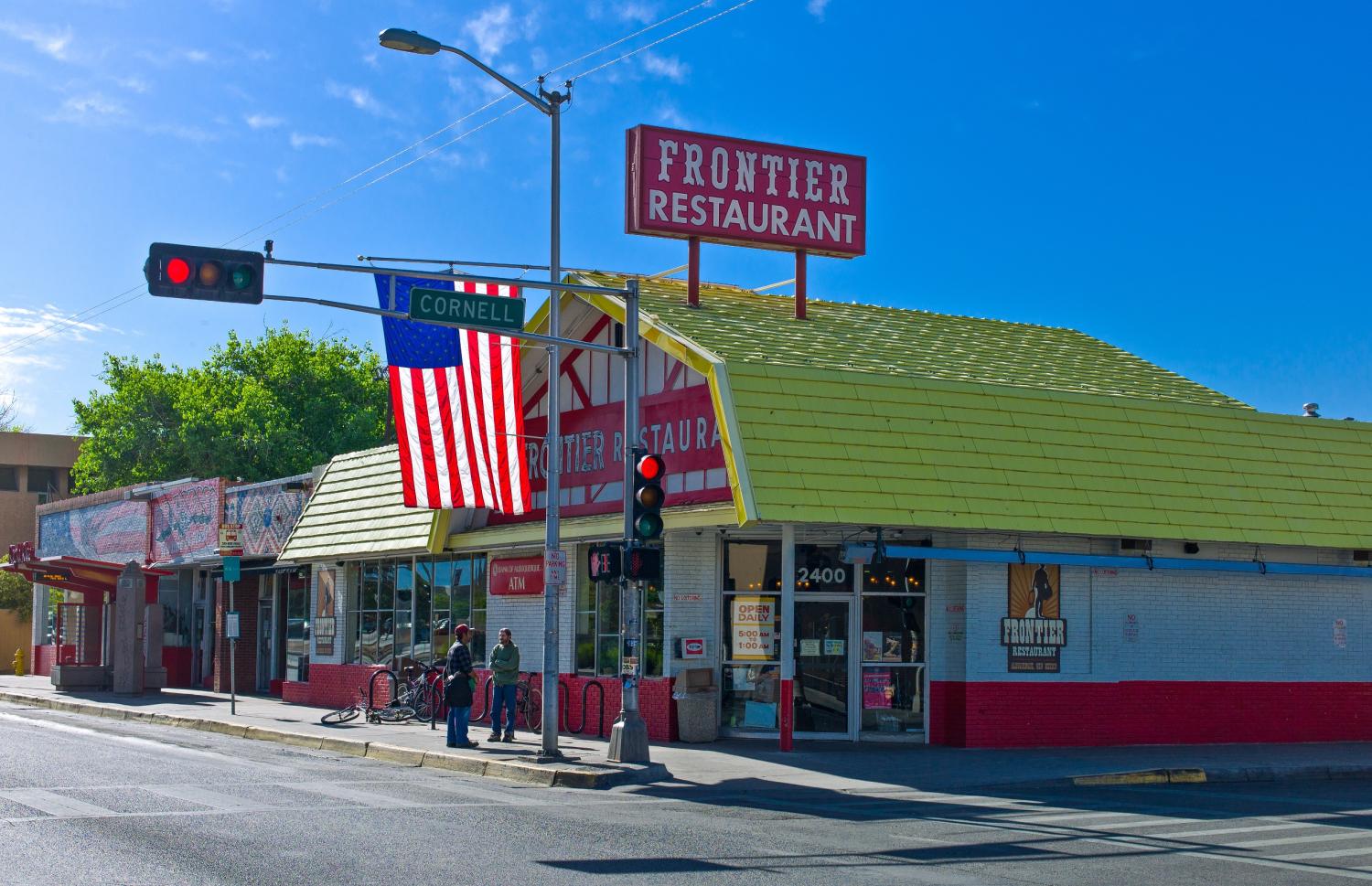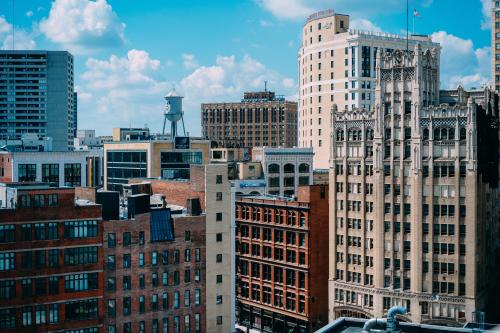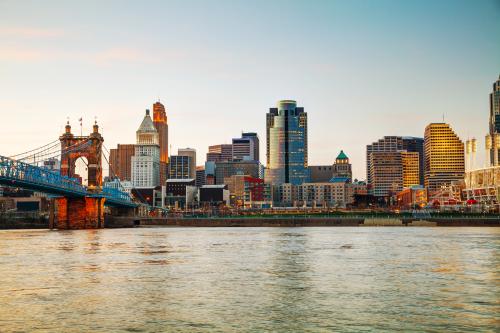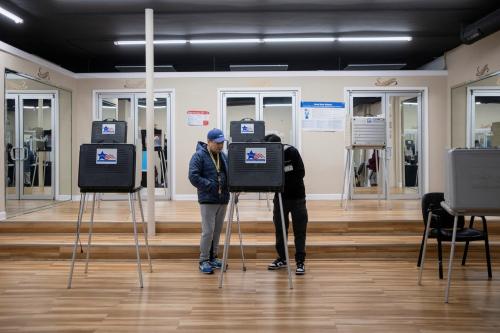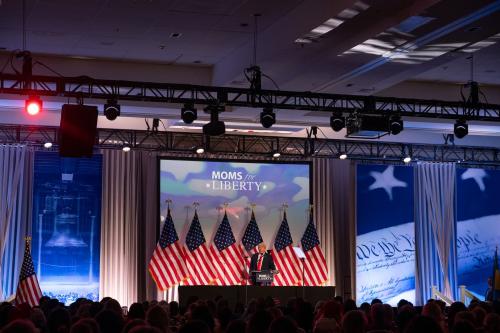Over the past few years, new research and major political and business events have combined to make Americans more attentive to how place shapes economic and social outcomes.
Back in 2013, Raj Chetty and his colleagues published a groundbreaking study showing that where a child grows up has major consequences for his/her chances at upward economic mobility. The results of the 2016 presidential election shone a spotlight on areas of the United States, particularly smaller towns and large swaths of the Midwest, that felt disconnected from the prosperity other parts of the country were enjoying. And the nationwide competition in 2017-2018 to land Amazon’s second headquarters, which elicited proposals from more than 200 U.S. communities both large and small, highlighted the increasing concentration of tech jobs in a few large markets, especially when “HQ2” eventually landed in New York and Washington, D.C.
One example of this increased awareness: Back in 2007, noted urban economist Ed Glaeser was writing essays like this one that decried the expenditure of federal dollars to support struggling large cities like Buffalo, N.Y. By 2018, he had co-authored a Brookings report recommending that the federal government provide place-based employment subsidies to individuals in areas of high unemployment like Appalachia.
As my colleagues Clara Hendrickson, Mark Muro, and Bill Galston recently described, the underlying trend toward greater disparities across places isn’t all that new. They show that beginning in the mid-1980s, wage and employment growth in the most prosperous metropolitan areas began to significantly outpace that in other metro areas. And they go on to demonstrate that this trend has affected small, rural communities most negatively, especially in the last decade, with significant attendant political consequences.
So a consensus is forming that place matters for economic policy; and evidence is mounting that the largest places are succeeding while smaller ones are not. The question of what to do about this has animated a lot of work at Brookings Metro in the past couple of years, including John Austin’s series on how to reinvigorate lagging portions of the Rust Belt; my report with Cecile Murray on stimulating growth and opportunity in older industrial cities; Nathan Arnosti and Amy Liu’s essay on strengthening ties between urban and rural regions; and the aforementioned Hendrickson/Muro/Galston report suggesting a suite of strategies for instigating new growth in places left behind.
Consensus is forming that place matters for economic policy; and evidence is mounting that the largest places are succeeding while smaller ones are not.
These ideas aim to strike a middle ground between what urbanist Jason Segedy calls the U-Haul School of Urban Policy—that government policy should focus primarily on enabling people to relocate to places with greater economic opportunity—and the notion that public spending can and should prop up highly economically distressed small towns all across the American landscape.
Efforts to create geographically broader-based economic prosperity should focus particular attention on midsized metro areas, those with at least 250,000, but fewer than 1 million, residents.
To be more explicit, I think there’s an emerging consensus developing at Brookings Metro (and perhaps elsewhere) that efforts to create geographically broader-based economic prosperity should focus particular attention on midsized metro areas, those with at least 250,000, but fewer than 1 million, residents. These places are distinctive in their own right, while they provide a valuable window into the issues facing the United States as a whole. Here are five reasons to pay attention to midsized metro areas:
They are falling behind their larger counterparts
First off, it’s worth observing that midsized metro areas overall exemplify many of the downsides of the divergence trend in the U.S. economy. As capital, growth, and talent have increasingly gravitated toward the nation’s large, superstar cities, the overall rate of job growth in midsized metro areas has lagged that in large (more than 1 million residents) metro areas by almost 4 percentage points this decade (Figure 1). This trend is pronounced with respect to high-tech jobs, which regions covet because they produce such significant spillover effects, as economist Enrico Moretti has found. The share of U.S. high-tech jobs located in midsized metro areas dropped from 15 percent to 13 percent between 2010 and 2017. Indeed, the first preference Amazon expressed in its request for proposals to host HQ2 was “metropolitan areas with more than one million people” (and eventually they selected America’s first- and sixth-largest metro areas). That’s a clear signal that midsized metro areas face growing competitive challenges.

They contain a significant share of America’s population
Altogether, 68 million people—or one in five Americans—live in one of the nation’s 135 midsized metro areas. While that’s only a little more than one-third the number of people who live in large metro areas (183 million), it’s far more than the number who live in smaller metro areas with populations under 250,000 (29 million), or even the 46 million “rural” Americans who live outside metro areas altogether (Figure 2). Midsized metro areas range in population from Yakima, Wash. (250,200) to Tulsa, Okla. (990,700). Although these regions lack the size and global reach of their much larger metro counterparts, they arguably retain the requisite scale to offer a distinctive economy and quality of life to their businesses and residents. Moreover, their size may also facilitate the sort of pragmatic, cross-sector problem solving that often bedevils larger metro areas; to wit, the average midsized metro area encompasses just 2.8 U.S. counties, versus 8.2 counties in the average large metro area.

They are geographically widespread
Midsized metro areas can be found in 44 of the 50 U.S. states (map 1). Several states including Idaho, Nebraska, New Mexico, and South Dakota that have no large metro areas are home to at least one midsized metro area. Midsized metro areas are an especially important feature of the Heartland, a region encompassing the Midwest and interior South whose aggregate economic performance has lagged national averages in recent decades. In the Heartland, midsized metro areas contain nearly 28 percent of the population, versus 24 percent nationally. Even in Iowa, typically portrayed as a rural state, nearly 40 percent of the population lives in midsized metro areas such as Cedar Rapids, Des Moines, and the Quad Cities. These city-regions thus represent focal points for the renewal of a demographically, economically, and politically important area of the country.

They are a demographic and economic microcosm of the United States
While midsized metro areas are searching for new niches in the global economy, accelerating demographic transformations are challenging their embedded norms and power structures, often stressing their social fabric in the process. In these ways, midsized metro areas are experiencing many of the economic and social crosscurrents affecting the nation as a whole.
A comparison of midsized metro areas’ demographic and economic profiles to national averages reveals a strong resemblance. Collectively, 65 percent of midsized metro area residents are white, 18 percent are Hispanic, 11 percent are black, and 4 percent are Asian, figures that very closely mirror each group’s share of total U.S. population (Figure 3). As in the United States as a whole, Hispanics have accounted for roughly 50 percent of population growth in midsized metro areas since 2010. Among midsized metro areas’ 30 million workers, one in seven is employed in health care; one in eight works in retail; one in nine is employed in manufacturing; and one in ten works in education, figures that also closely track national averages (Table 1).
The ability of midsized metro areas to successfully navigate racial and ethnic transitions, and to continue to evolve their economies from production to services, may thus be critical harbingers for our nation’s abilities to do so overall.


They represent key battlegrounds in American politics
As their over-representation in the Heartland suggests, midsized metro areas are critical pivot points within the U.S. electoral map. In the 2016 presidential election, Donald Trump captured about 4.6 percent more of the popular vote share than Hillary Clinton in midsized metro areas (Figure 4). This was far closer than the 16 to 18 percentage-point differential that existed in large (advantage: Clinton) and small (advantage: Trump) metro areas. In the 2012 contest, the margin in midsized metro areas was even narrower, at 1.4 percentage points (to Mitt Romney over Barack Obama). And in 2018, while major-metro suburbs received most of the battleground attention, several House districts that changed party hands represented midsized metro areas, such as Modesto, Calif.; Des Moines, Iowa; Lansing, Mich.; Utica-Rome, N.Y.; and Reading, Pa.

What would “paying attention” to midsized metro areas look like, in practice?
For public policymakers, at the federal and state levels, it would mean focusing key expenditures—for economic development, higher education, and infrastructure—in these midsized communities. This spending could strengthen their distinctive regional industry clusters; bolster the contribution of their public colleges and universities to local innovation and talent development; and connect these places more efficiently to both larger nearby cities and surrounding small towns and rural areas. Geographically targeting spending to these midsized areas—through dedicated new programs like Indiana’s Regional Cities Initiative, or preferences for these areas within existing programs—will likely generate a higher rate of return than providing a thinner layer of subsidy across all types of communities, or further juicing the economy in big metro areas already at risk of overheating.
For urbanists, it would mean broadening our aperture beyond the very largest cities and metro areas. Places like Boston, Chicago, Los Angeles, New York, San Francisco, and Washington, D.C. still exert disproportionate influence on what passes for urban policy in America, largely because they house our nation’s most significant media outlets. As Jason Segedy recently wrote in City Observatory, this has led us to obsess about the problems of urban affordability, while comparatively ignoring the problems of disinvestment and decline that many midsized metro areas, particularly those in the Heartland (like Segedy’s home city of Akron, Ohio), continue to face.
While Brookings Metro has always focused its work on a broad range of cities across America, our own practice of analyzing data almost exclusively for the 100 largest metro areas (which now have populations of 550,000 and above) may be due for a refresh. In doing so, we’ll also need to consider how to deliver these research insights to midsized metro leaders in new ways, given the decline of traditional media in these markets.
Of course, America’s largest metro areas, which house more than half our population, still matter greatly to our national prosperity. Many of those large regions confront serious challenges—industrial transition, outdated infrastructure, social inequality—that demand continued attention. Yet amid rising concern about our nation’s economic and social cohesion, this is arguably the right time to also lift up the midsized metro areas that are poised to determine whether our country grows together, or grows apart.
Thanks to David Harshbarger for mapping assistance.

